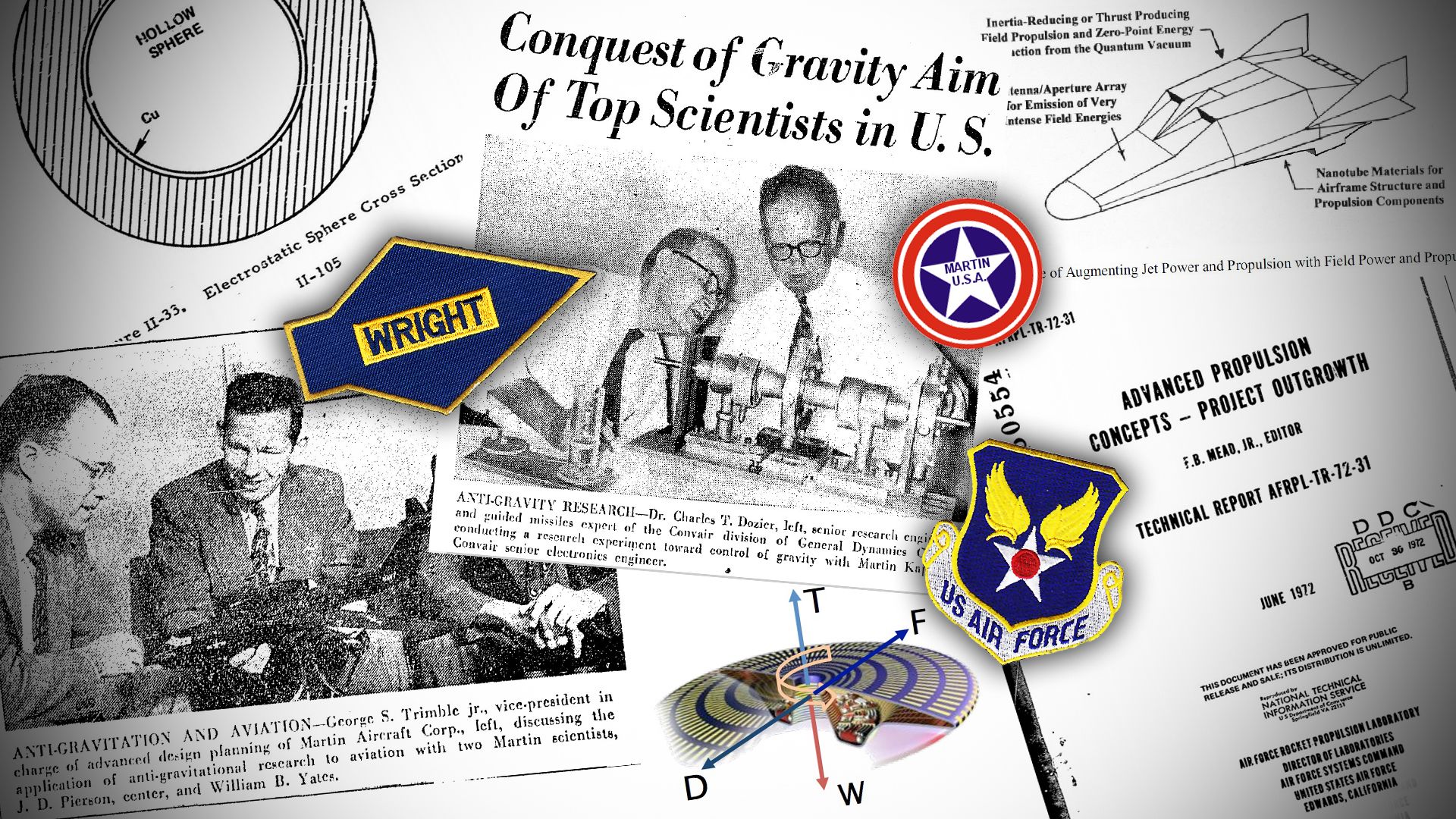Government UFO Programs Extensively Studied Memory Metal Found at Roswell
Article by Gautam Peddada July 6, 2021 (thepulse.one)
• Following the Roswell UFO crashes incident in July 1947, the debris from Roswell was flown to Wright Field Air Force base in Ohio. Technicians at the Air Materiel Command (AMC) at Wright were perplexed and fascinated by the characteristics of the so-called ‘memory metal’. After determining that titanium was one of the component parts of memory metal, AMC hired the science and technology development company Battelle Memorial Institute, of Columbus, Ohio to study the recovered extraterrestrial material in hopes of reproducing it.
• In September 1947, General George Shulgen of Air Intelligence described the flying saucers’ “materials of construction” as being composed of “composite or sandwich construction employing different combinations of metal and polymers.” Some of the wreckage from the Roswell crash was said to have a metal-plastic look and properties, along with “specially treated” Titanium. There are no records of any titanium alloy experiments conducted before 1947.
• Battelle began recipes for combining nickel with ultra-high-purity titanium. In the 1950s, the Naval Ordnance Lab was brought into the research, and by 1962, the ‘shape-recovery’ alloy ‘Nitinol’ was developed by Dr. Fred Wang and William Buehler of the Naval Ordnance Lab. Buehler later complained that following the breakthrough, NASA hired Battelle reclaim the project away from the NOL to “conduct further characterization studies” on Nitinol.
• The Defense Intelligence Agency corroborated that the ‘metamaterial’ Nitinol became widely utilized in defense and space projects, and has been extensively investigated by the Pentagon’s UFO initiative, the ‘Advanced Aerospace Threat Identification Program’, as well as its predecessor program ‘Advanced Aerospace Weapon System Applications’ (AAWSA).
• In response to a Freedom of Information Act request submitted by UFO researcher Anthony Bragalia in December 2017, the Pentagon (over three years later) made available over 150 pages of information pertaining to ‘fallen wreckage from unidentified flying objects’. The documents confirm that Nitinol is indeed made up of Titanium and Nickel. Its material qualities, such as being very lightweight and durable, are mentioned and well as its potential for incorporation into the human body to enhance health. Bragalia’s FOIA request claimed the material was being housed by Bigelow Aerospace in Las Vegas, pursuant to being awarded a government contract through AAWSA.
• In 1990, Los Angeles Dodgers pitcher Orel Hershiser developed serious career-ending shoulder issues. But Hershiser was only sidelined for one season and gradually returned much of his former strength due to orthopedic surgeons reconnecting the tendons to the bone using Nitinol, a strong and flexible nickel-titanium alloy with the ability to remember it’s original shape.
• Nitinol eyeglass frames can withstand significant damage. You can twist them and sit on them, and they will spring back to their original shape. A NASA engineer has even developed a pair of automated Nitinol tweezers so that doctors may retrieve small items through small wounds. Nitinol also has the ability to straighten teeth and prevent blood clots.
 In 1990, Los Angeles Dodgers pitcher Orel Hershiser’s stellar career was
In 1990, Los Angeles Dodgers pitcher Orel Hershiser’s stellar career was

jeopardized by serious shoulder issues. Hershiser had damaged the tissue and tendons in his shoulder so badly after seven years of major league pitching that his arm was no longer firmly anchored in the socket. He felt greater agony and lost control with each throw of the ball. The issue that has knocked many pitchers out of work before him.
However, owing to Nitinol, a strong and flexible nickel-titanium alloy with the ability to remember it’s original shape, Hershiser was only sidelined for one season and gradually returned much of his former strength.

Orthopedic surgeons bore a hole in his shoulder bone and implanted a small metal anchor that

jammed itself into the hole using a Nitinol hook. Sutures attached to the metal anchor allowed the doctors to reconnect the tendons to the bone securely.
Nitinol has the ability to straighten teeth and prevent blood clots. Nitinol eyeglass frames can withstand significant damage (you may twist them, sit on them, and otherwise torment them) and will spring back to their original shape. A NASA engineer has developed a pair of automated Nitinol tweezers that are intended to be beneficial to doctors who must retrieve small items through small wounds.
Crashed Wisdom
What gives Nitinol the capacity to recall and return to its original shape? Perhaps more significantly, where did Nitinol originate? According to the widely held belief, Nitinol was discovered in the 1950s and early 1960s by a researcher from the Naval Ordnance Laboratory in White Oak, Maryland.
 According to a stunning revelation made by the Defense Intelligence Agency, Nitinol
According to a stunning revelation made by the Defense Intelligence Agency, Nitinol might have been the outcome of humanity’s first reverse engineering effort of non-human technology. The revelation comes months after Luis Elizondo’s claim on Tucker Carlson that the US government has crashed wreckage.
might have been the outcome of humanity’s first reverse engineering effort of non-human technology. The revelation comes months after Luis Elizondo’s claim on Tucker Carlson that the US government has crashed wreckage.
Shape-Shifting
In an unexpected turn of events, the Defense Intelligence Agency has revealed that Nitinol, a metal also widely utilized in defense and space has been extensively investigated by the Pentagon’s UFO initiative, Advanced Aerospace Threat Identification Program as well as its predecessor a program called Advanced Aerospace Weapon System Applications (AAWSA)- also responsible for conducting studies at Skin Walker Ranch. In response to a Freedom of Information Act request submitted by researcher Anthony Bragalia, the Pentagon has made available over 150 pages of information pertaining to fallen wreckage from unidentified flying objects. The Pulse was also able to verify that the program director in charge of the research was none other than James T. Lacaski, Luis Elizondo’s predecessor.
Many pages of “advanced technology reports” on Nitinol can be found in the Pentagon’s disclosure of research materials. The pages in the FOIA response on Nitinol look at its potential for incorporation into the human body to enhance health. It also indicates that Nitinol is made up of Titanium and Nickel. This immediately brings to mind General Arthur Exon’s comments about the physical composition of the crash debris. General Arthur Exon is on the record as claiming the material of the Roswell craft as being composed of “titanium and some other metal…[but] the processing was odd,” as well as numerous memoranda stating that the wreckage in their custody was most likely manufactured “by unique manufacturing processes.”
FAIR USE NOTICE: This page contains copyrighted material the use of which has not been specifically authorized by the copyright owner. ExoNews.org distributes this material for the purpose of news reporting, educational research, comment and criticism, constituting Fair Use under 17 U.S.C § 107. Please contact the Editor at ExoNews with any copyright issue.


